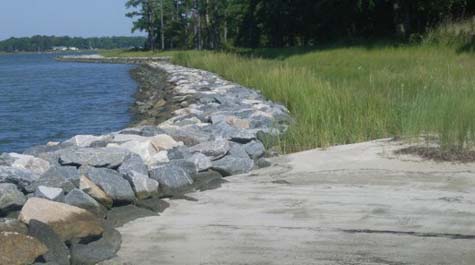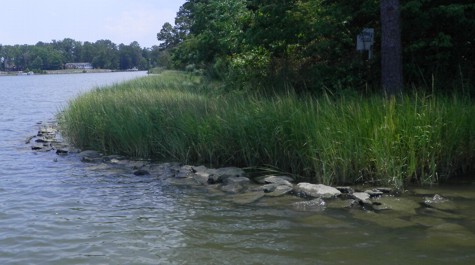Shoreline Protection
In order to maintain a more natural coastal profile, the Shoreline Studies Program at the Virginia Institute of Marine Science prefers to use Living Shoreline methods for shore stabilization. Living shorelines consist of sand, plants, and rocks that create a sloped land/water interface to protect the base of the bank. The site-specific conditions determine the most effective configuration of these elements for shore protection.
It's important to know that most shoreline structures, in-and-of-themselves, don't prevent flooding due to storm surge during large events, but they can mitigate damage by reducing the energy of waves breaking on structures. Marshes and beaches have been shown to absorb a great deal of energy as the waves travel across. Dunes provide a “backstop” for surge and waves in lower elevation areas. Grading of higher banks will allow waves to “run up” the slope rather than break on it, potentially reducing erosion during storm events.
Most shoreline management options require a permit.



